6,000 ships recorded sunk in Great Lakes in past 400 years. Edmund Fitzgerald is the largest victim yet. But the evidence shows DEW Hallmark crack-free radically bent and curious insta-rusted steel galore (in an environment that is highly preservative and does not cause nor allow rust to develop).
This is speculative theory: Yes, metal does bend under enormous strain; however, particularly with freezing-cold metal, the damage overwhelmingly tends to crack and shatter brittle intra-material domains, not to gently bend them as if warm taffy. The insta-rust at the ‘melting points’ is more powerful supporting evidence.
The ongoing fixation by Zionic Mass Media indicates likely something beyond morbid curiosity. Strange lack of clear imagery. Expert participants in underwater exploration noted extensive damage to the bow inconsistent with waves, hull cleaved in two, and sinking.
“He didn’t even have time to give a distress call [over emergency radio]”.
Suddenness of sinking noted 4:40 into https://www.youtube.com/watch?v=oyaEDWf_dG8
Also, extreme suddenness of the sinking, supposedly occurring within five minutes. Seems infeasible; maybe the water itself was somehow rareified, like what is theorized to happen in Devil’s Bermuda Triangle…maybe the water buoyancy vanished / dropped and ship plummeted to the bottom not thru water but thru foamy / airified / rareified nothingness. HUTCHISON EFFECT is shown to affect water. DEW superheats / vaporizes water (like inside kitchen microwave ovens). Was the speculated DEW-sinking of Big Fitz in-part some military test to evaluate insta-vaporization of the water? One clue residue might be presence of abundant tritium which is rampant pollution at Brookhaven National Labs RHIC “ion-gun” and also at WTC 911 sites, Pentacon, 1995 Murrah OKC test and other DEW Attack sites.

RADAR downed. Was it downed physically by water impact, or was it electrically downed by energy beam that likely also disabled its radio comms? Imagery of cabin roof and interior would clarify.
Famous Last Words: Ernest McSorley: Captain SS Edmund Fitzgerald: “We are holding our own.”
Impossibly gashed hull, see below.

Comment about roughest seas ever been in at 1:25 https://www.youtube.com/watch?v=lH4diCN6xtk — Uncommonly rough weather is DEW Hallmark.

7:00 in — ‘water was coming into the hull as fast as it could be pumped out’ – evidence of not a mere collision or bottoming but instead of catastrophic damage consistent with torpedo or energy weapon burst.
7:20 in — one-hundred miles per hour winds, severe and unexpected – DEW Hallmarks – a manufactured storm cyclone? Has anything this powerful been recorded before or since?


3 days after the downing, the US Navy is there on-site doing advanced magnetic anomaly detector flyovers. That is fishy as funk.
1975 Lake Superior Navy operation that wasn’t research (Edmund Fitzgerald)
The other notable Navy activity on Lake Superior in 1975 was after the sinking of the SS Edmund Fitzgerald (November 10, 1975):
- On November 14, 1975, a U.S. Navy aircraft with a magnetic-anomaly detector (gear normally used to hunt submarines) overflew the search area and detected the wreck as a large magnetic anomaly on the lake bottom.Wikipedia
That was an operational search mission using Navy sensing tech, not an ongoing “energy research” program— but it’s another Navy–Lake Superior–1975 intersection people sometimes think of.
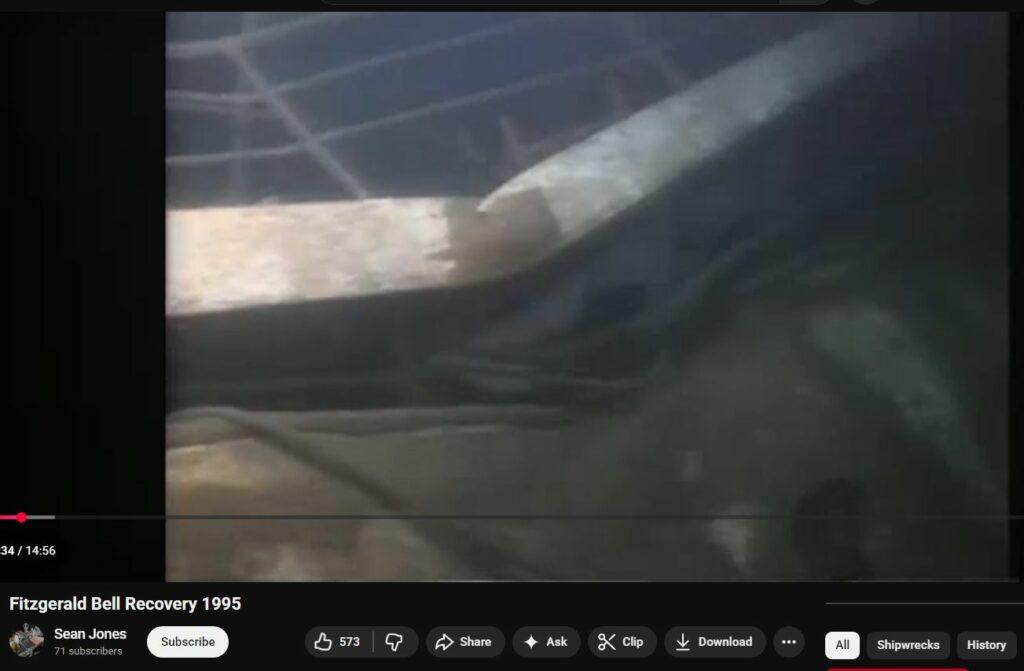
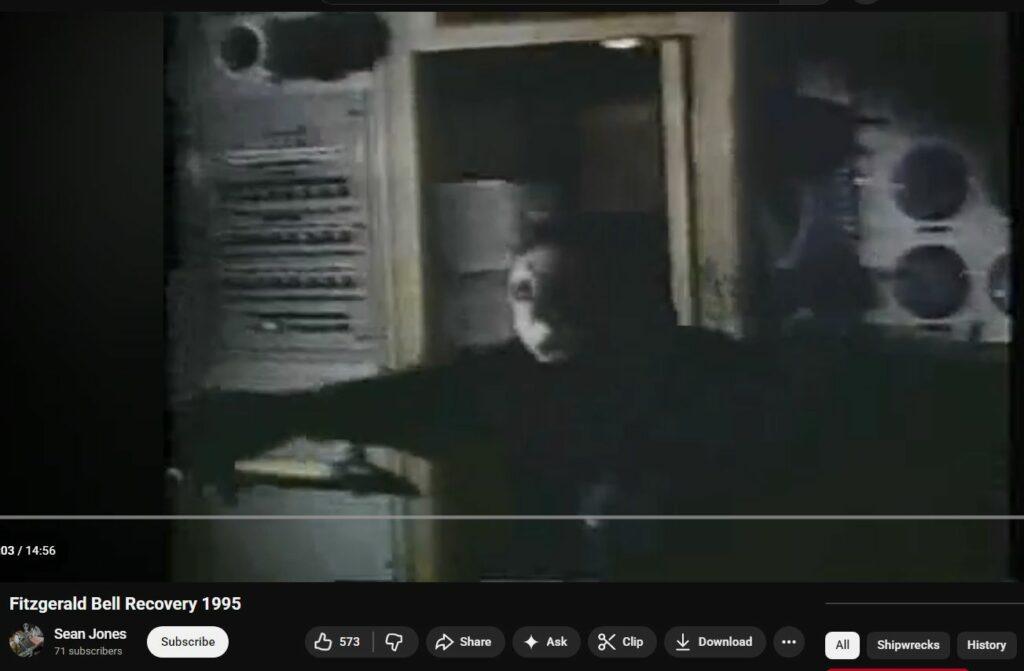
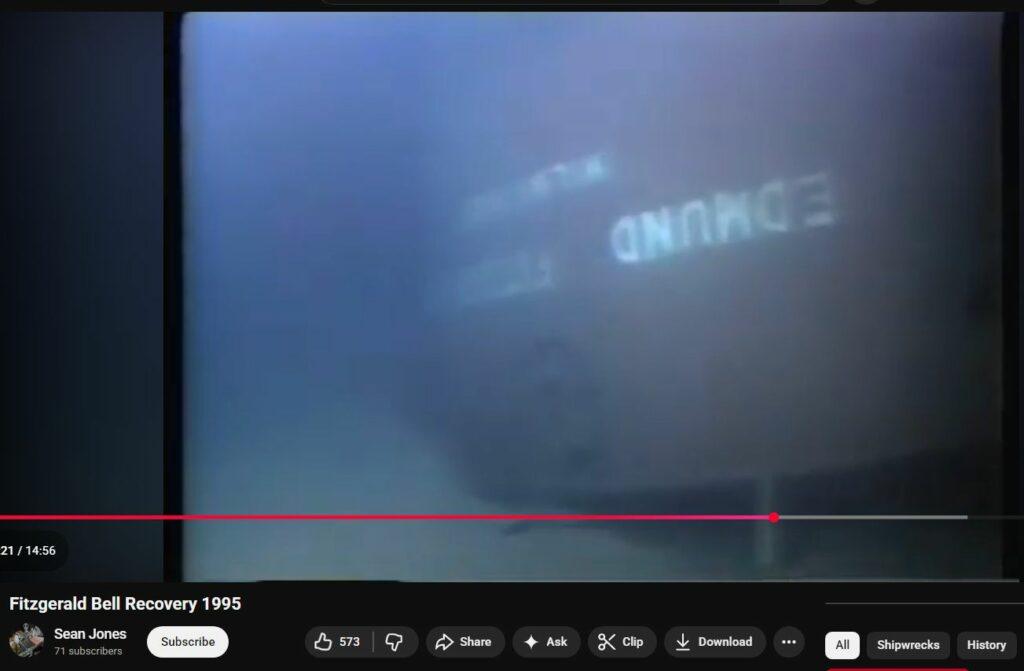
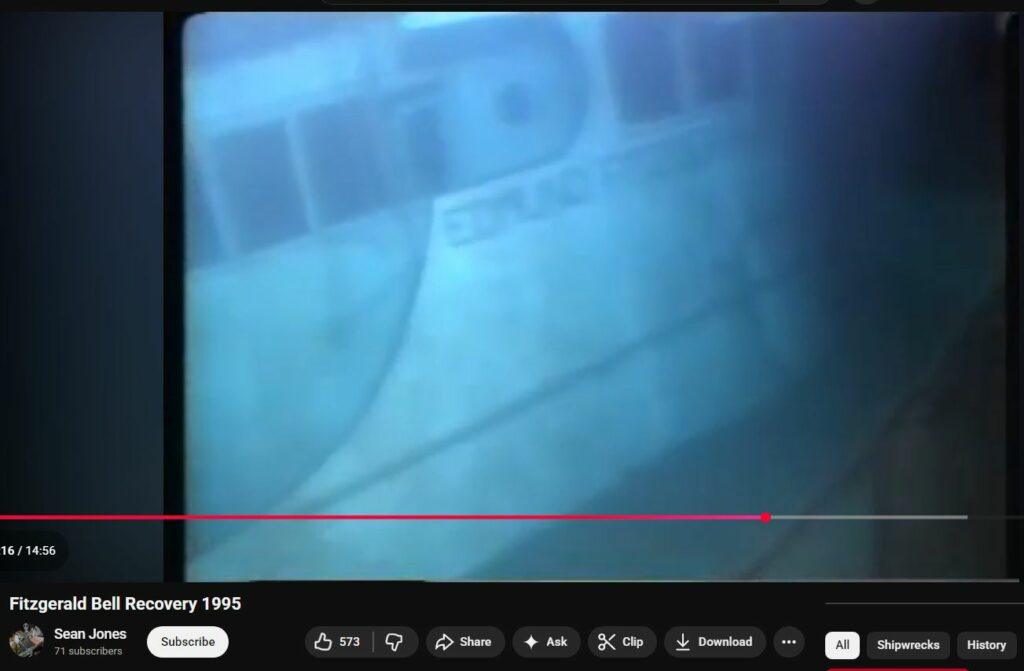
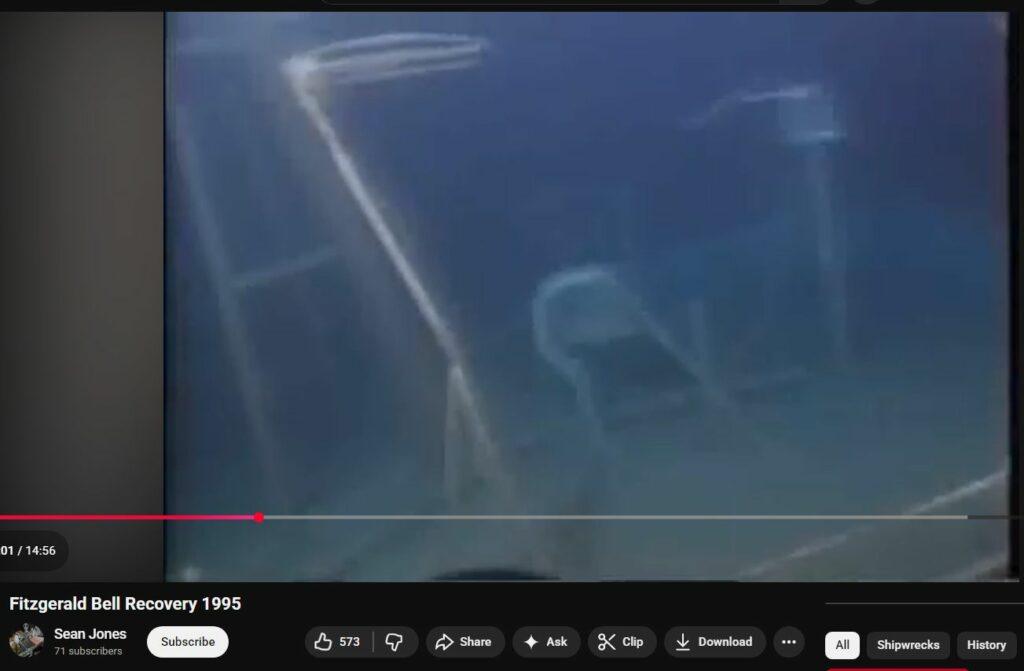
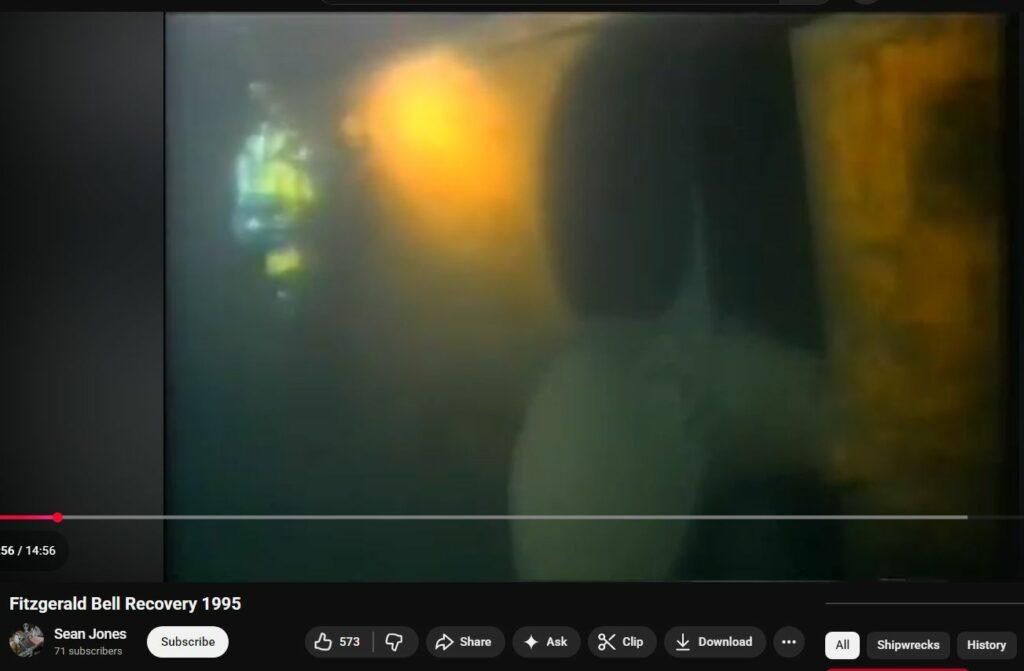



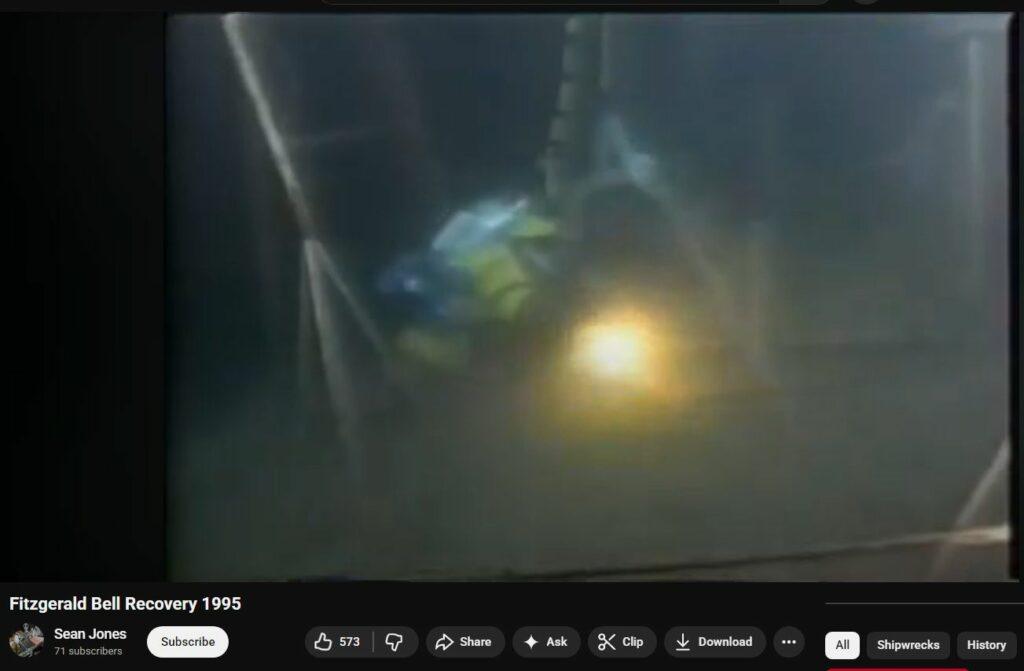
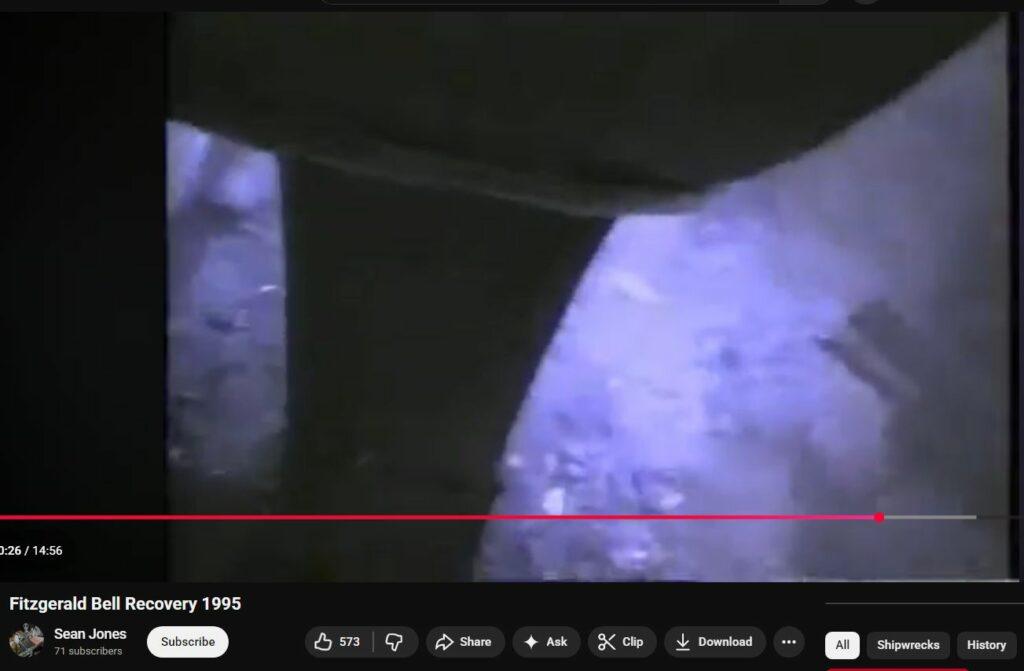
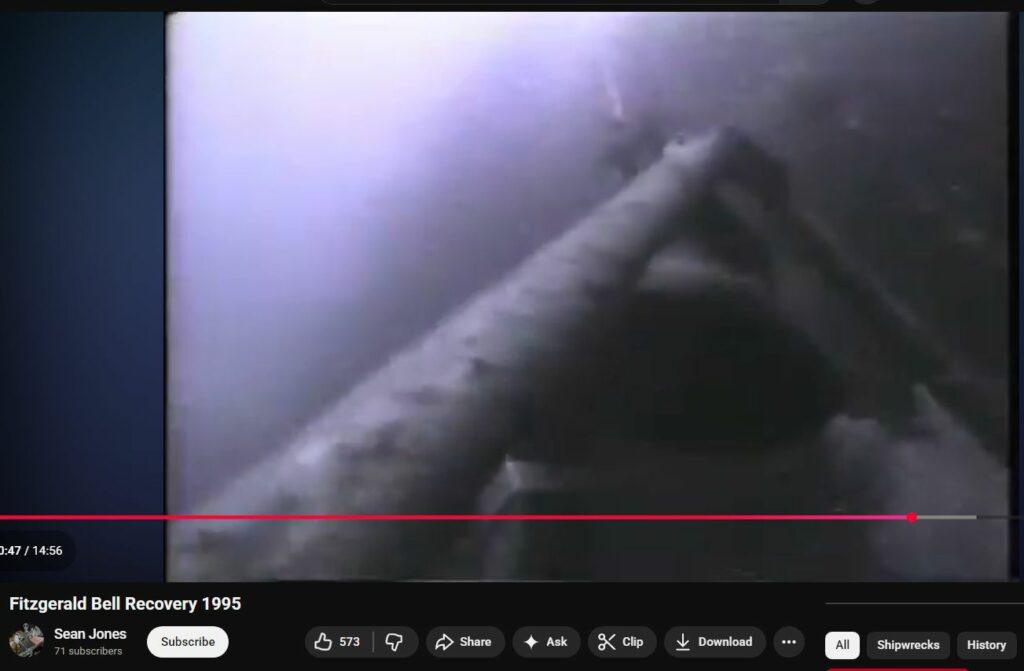
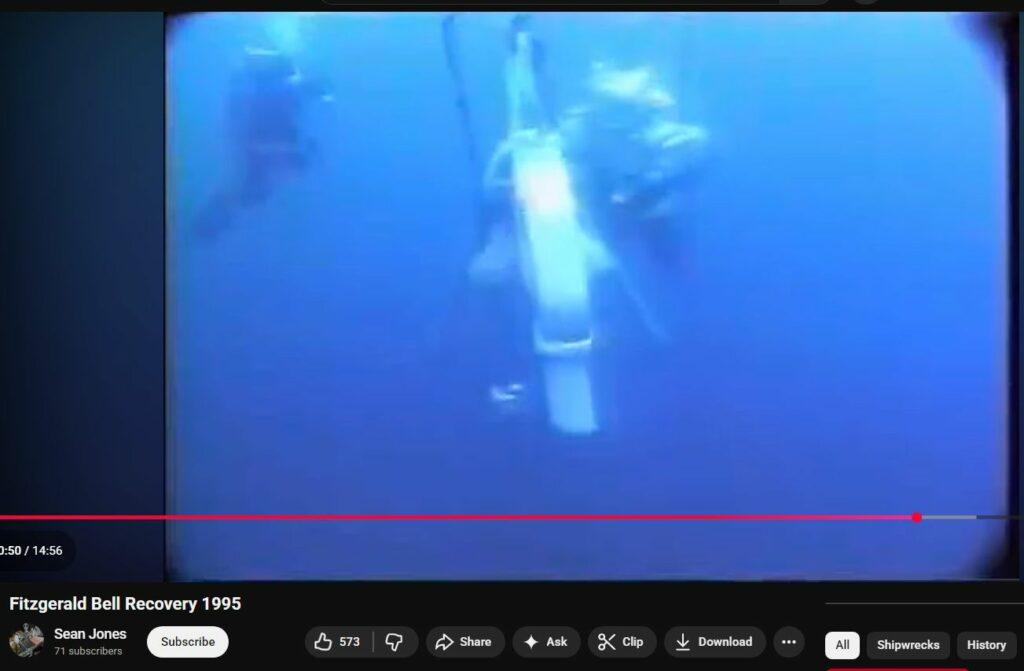
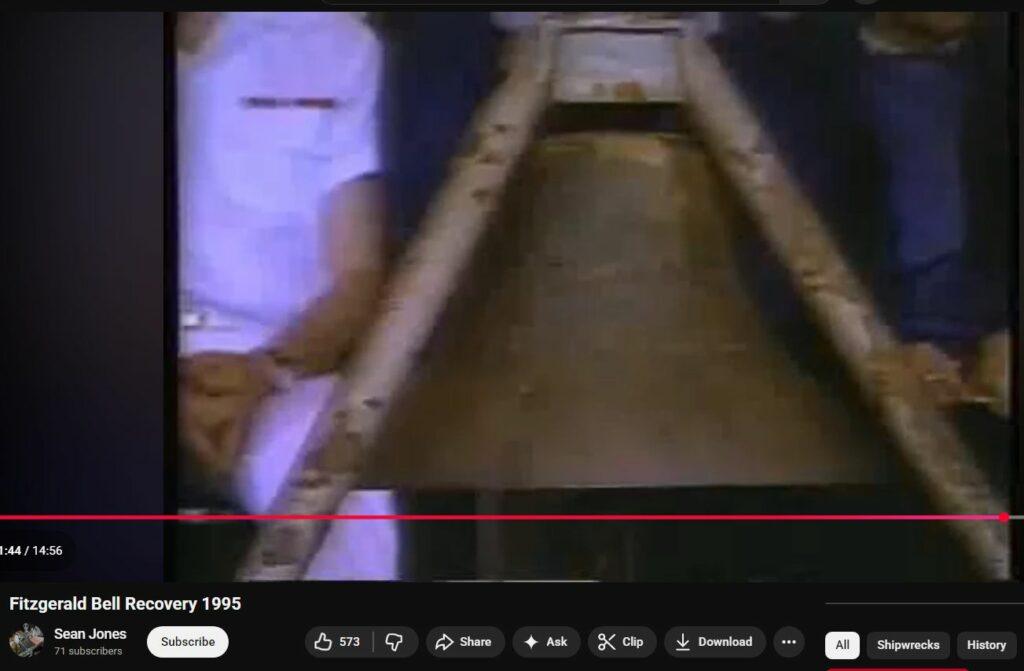
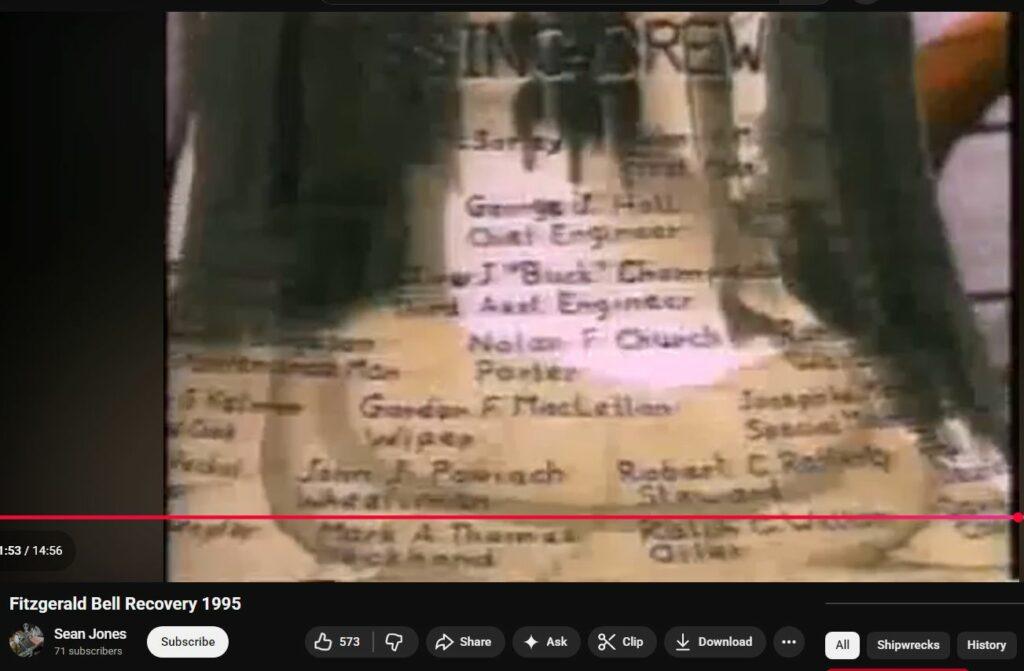
MAY 1976 – U.S. COAST GUARD EXPEDITION
During the initial expedition made by the United States Coast Guard in May, 1976, many new discoveries were made. One of these things was the ship itself! The ship was discovered only a few days after the sinking, but this expedition officially determined that the wreckage was the Edmund Fitzgerald through identification of the hull and the name on the ships. Hundreds of photos were taken, and the official United States Coast Guard report was issued following the analysis of the data collected during the expedition. After its investigation, the Coast Guard announced its highly controversial theory that the ship sank due to faulty hatch covers, spawning anger from some and disbelief from researchers and family members.
AUGUST 1989 – REMOTE OPERATED VEHICLE EXPEDITION
Under the organization of Michigan Sea Grant, in late August, 1989, the Edmund Fitzgerald was again explored with the highly technological Remote Operated Vehicle (ROV). The exploration included many experts including: the NOAA (National Oceanographic and Atmospheric Administration), the National Geographical Society, the Great Lakes Shipwreck Historical Society, US Army Corps, and the Michigan Department of Natural Resources. The R.V. Grayling was the primary ship utilized in the expedition.
During this expedition some of the discoveries made were very haunting. Once again, determination could not be made on the cause of the sinking, but there was still glass intact on the ship, and there was also a door on the pilothouse that was open. This could lead people to believe that someone tried to escape since the door was not “dogged.” The team also claimed some of the damage on the bow could not have been caused by the storm…it was far too extensive.
https://ssedmundfitzgerald.org/expeditions
About the Ship
The S.S. Edmund Fitzgerald was conceived as a business enterprise of the Northwestern Mutual Life Insurance Company of Milwaukee, Wisconsin. Northwestern Mutual contracted with Great Lakes Engineering Works of Ecorse, Michigan to construct a “maximum sized” Great Lakes bulk carrier. Her keel was laid on August 7, 1957 as Hull No. 301.
Named after the President and Chairman of the Board of Northwestern Mutual, Fitzgerald was launched June 8, 1958 at River Rouge, Michigan. Northwestern Mutual placed her under permanent charter to the Columbia Transportation Division of Oglebay Norton Company, Cleveland, Ohio. At 729 feet and 13,632 gross tons she was the largest ship on the Great Lakes, for thirteen years, until 1971.
The Fitzgerald’s normal course during her productive life took her between Silver Bay, Minnesota, where she loaded taconite, to steel mills on the lower lakes in the Detroit and Toledo area. She was usually empty on her return trip to Silver Bay. On November 9, 1975 Fitzgerald was to transport a load of taconite from Superior, Wisconsin, to Zug Island, Detroit, Michigan.
https://shipwreckmuseum.com/edmund-fitzgerald/
The Fateful Journey
The final voyage of the Edmund Fitzgerald began November 9, 1975 at the Burlington Northern Railroad Dock No.1, Superior, Wisconsin. Captain Ernest M. McSorley had loaded her with 26,116 long tons of taconite pellets, made of processed iron ore, heated and rolled into marble-size balls. Departing Superior about 2:30 pm, she was soon joined by the Arthur M. Anderson, which had departed Two Harbors, Minnesota under Captain Bernie Cooper. The two ships were in radio contact. The Fitzgerald being the faster took the lead, with the distance between the vessels ranging from 10 to 15 miles.
Aware of a building November storm entering the Great Lakes from the great plains, Captain McSorley and Captain Cooper agreed to take the northerly course across Lake Superior, where they would be protected by highlands on the Canadian shore. This took them between Isle Royale and the Keweenaw Peninsula. They would later make a turn to the southeast to eventually reach the shelter of Whitefish Point.
Weather conditions continued to deteriorate. Gale warnings had been issued at 7 pm on November 9, upgraded to storm warnings early in the morning of November 10. While conditions were bad, with winds gusting to 50 knots and seas 12 to 16 feet…
https://shipwreckmuseum.com/index.php/the-fateful-journey/


Numeracy Galore
9 Nov 1975
29 crew
see gematria tables below
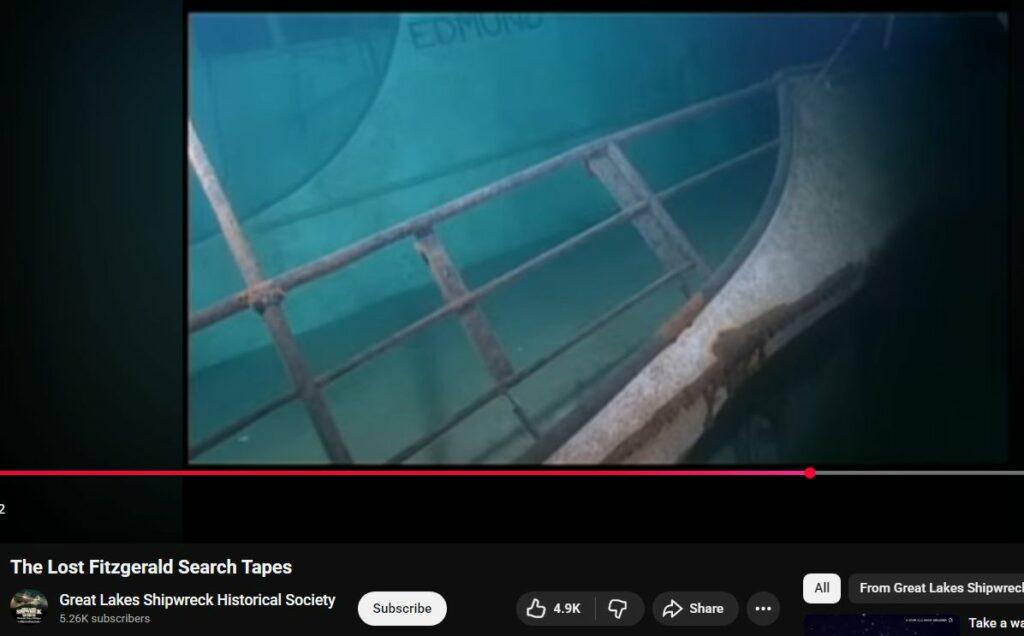
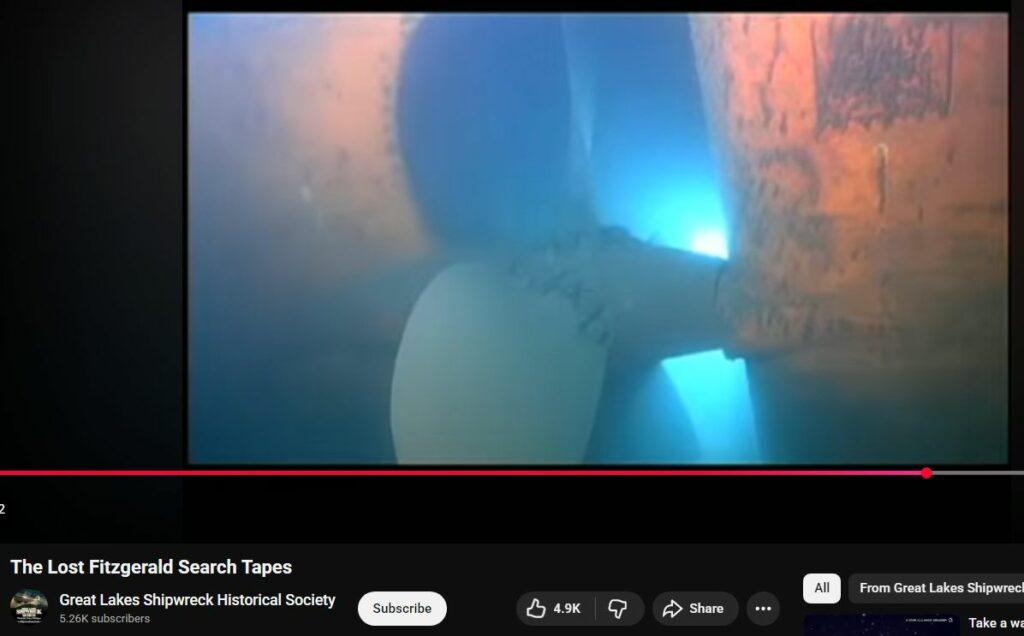



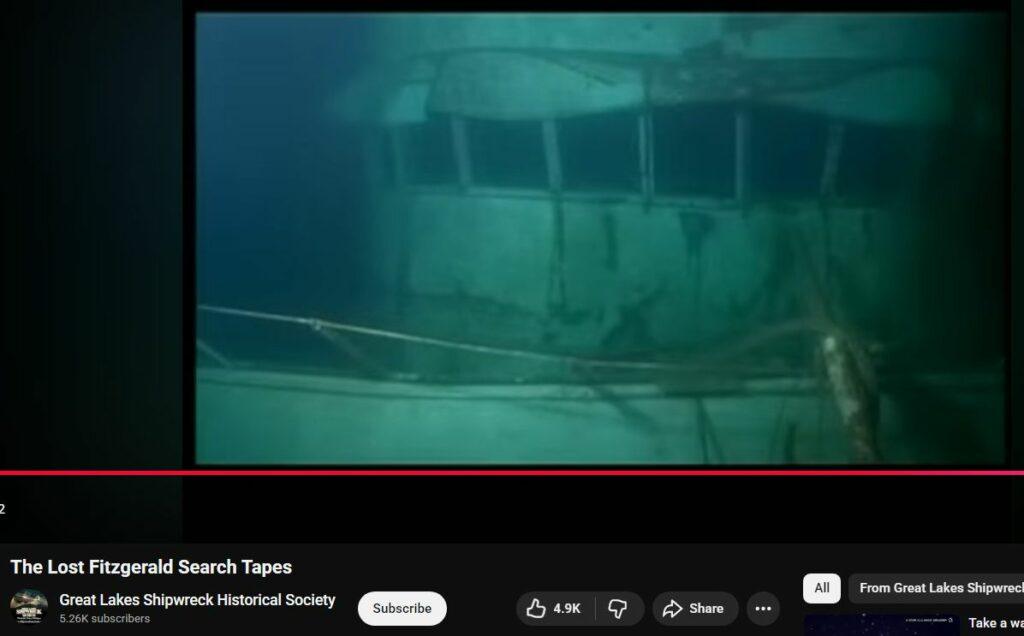


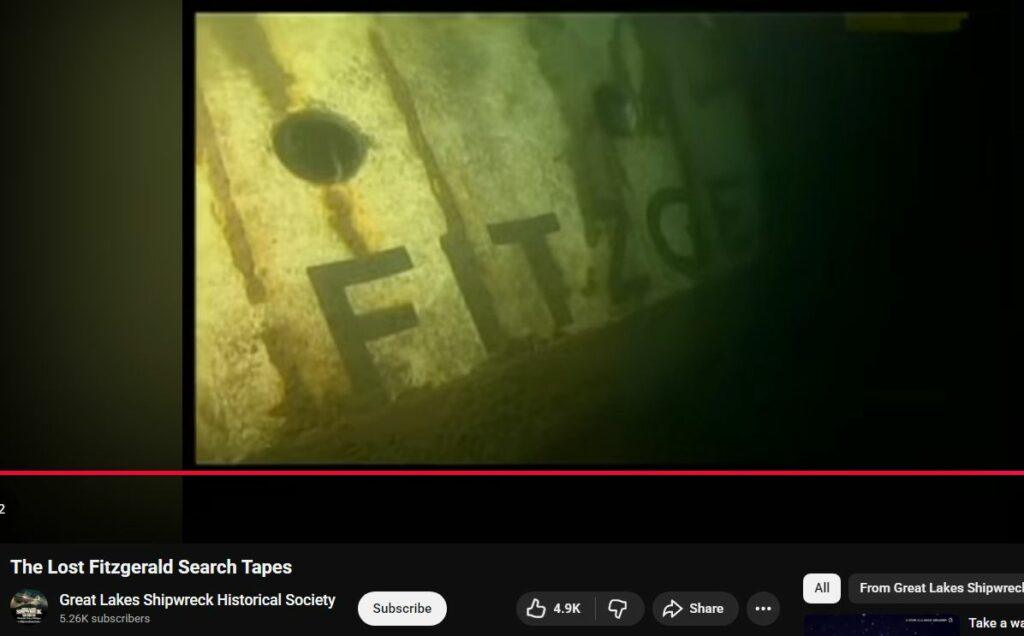
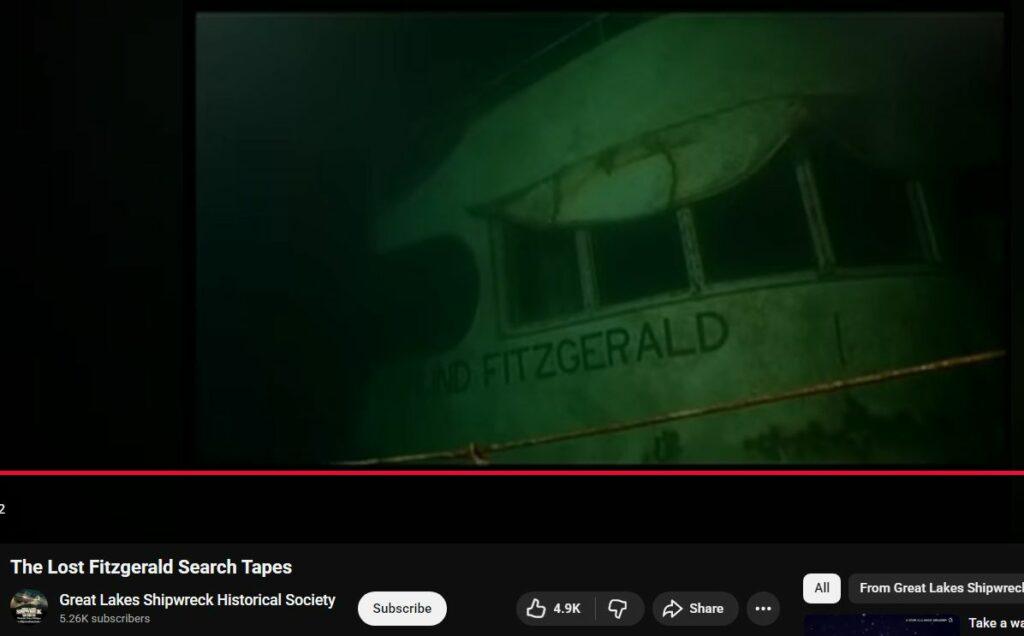

Impossibly Gashed Hull
Notice the 200-foot wide gash cut completely through the hull, high-up on the bow, eerily similar to DALI at Baltimore FSK Bridge takedown in March 2024.


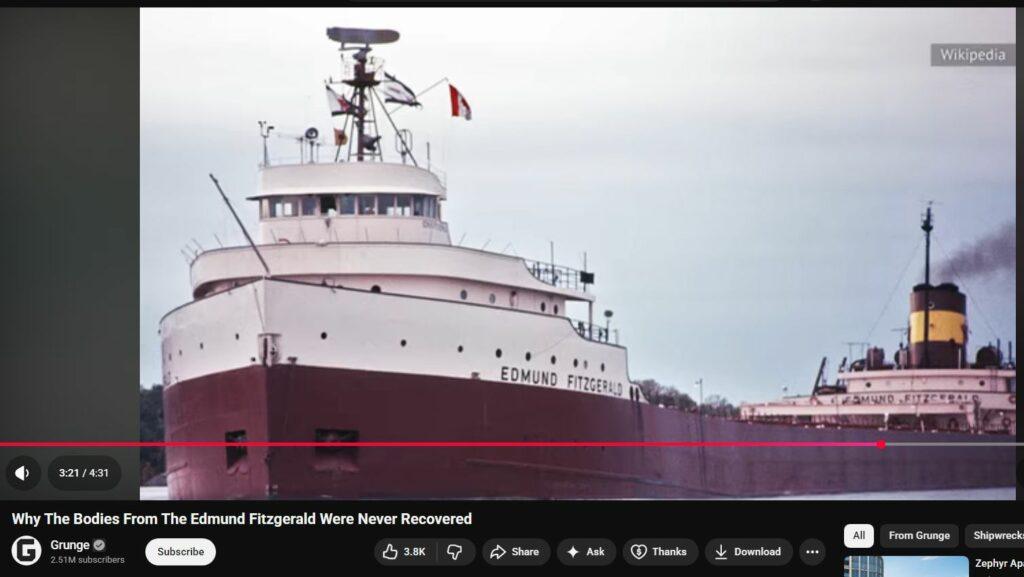
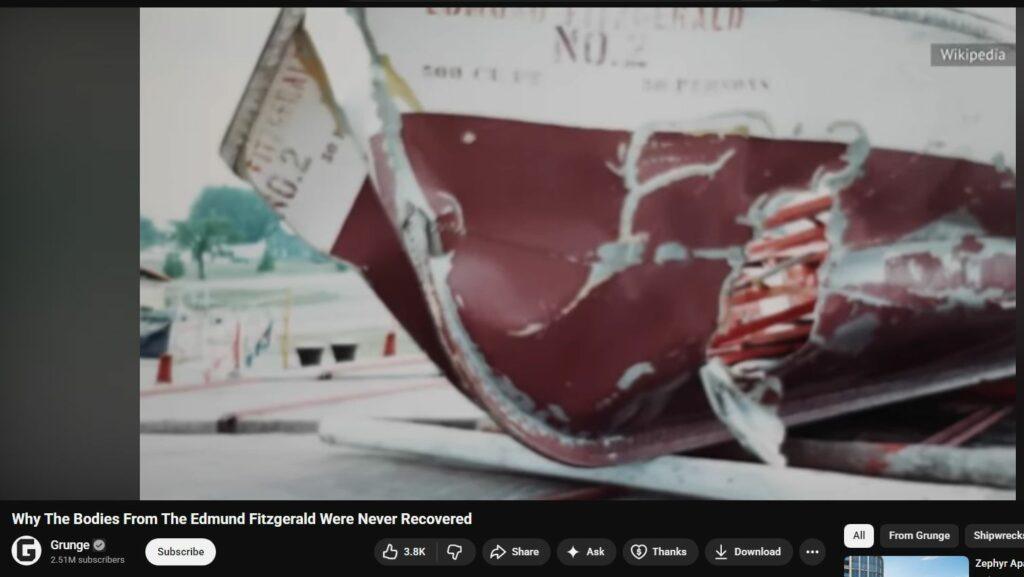
“To this day, the exact cause of the Fitzgerald sinking is unknown.”
4:00 in https://www.youtube.com/watch?v=lH4diCN6xtk
Ear-Witness Barbara Lynn Kubant 2025
There was a distress call, but it was to the home-office over business-band SSB HF radio, not over the public airwaves. Business-radio relay operated by Barbara Lynn Kubant.
https://www.youtube.com/watch?v=sENSjIifn1Q

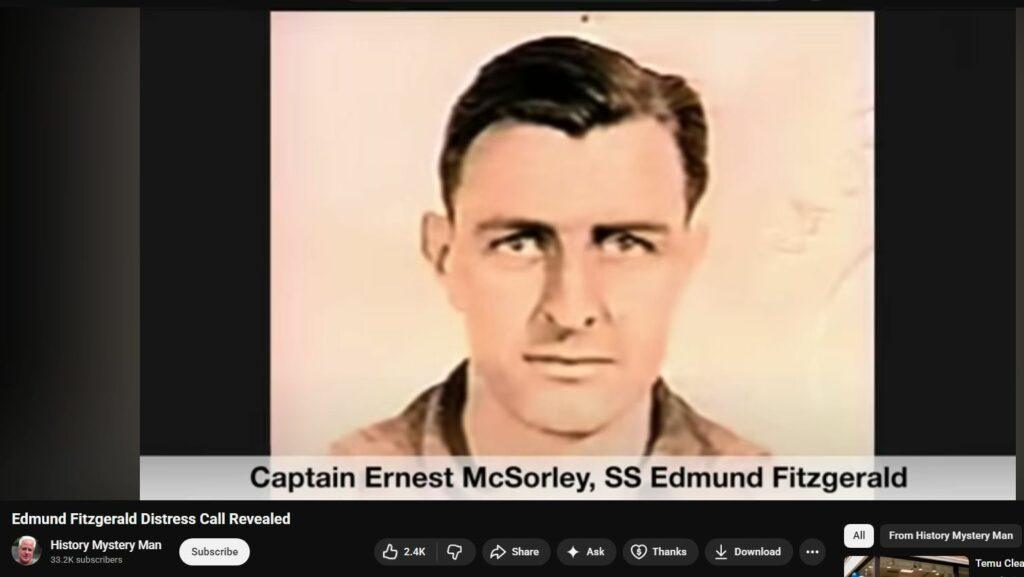
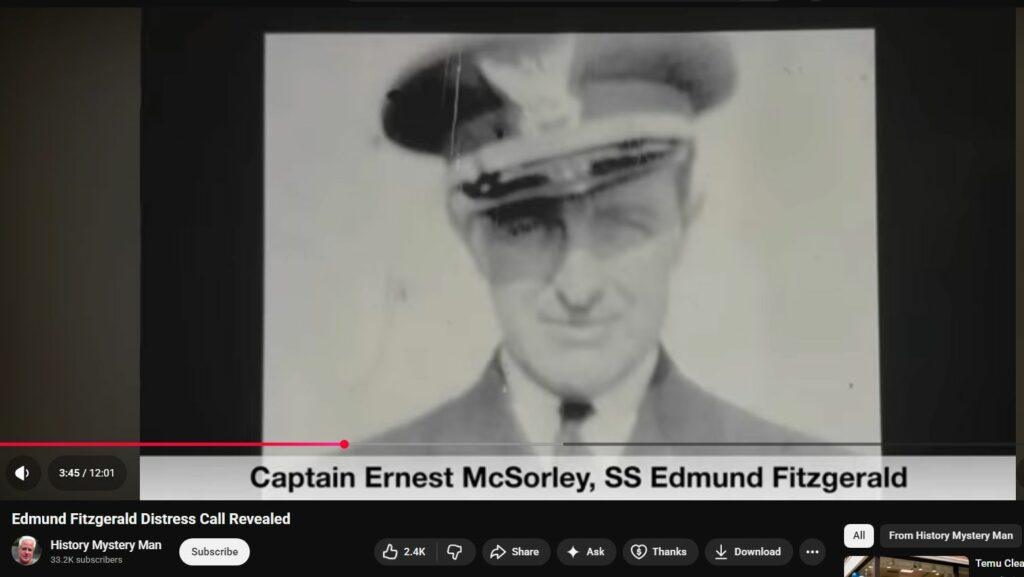
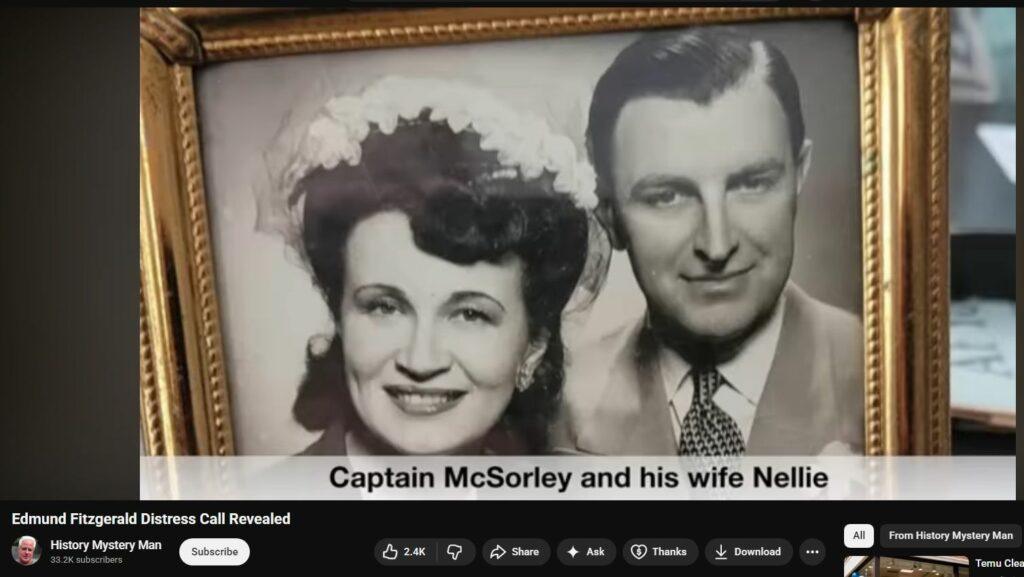
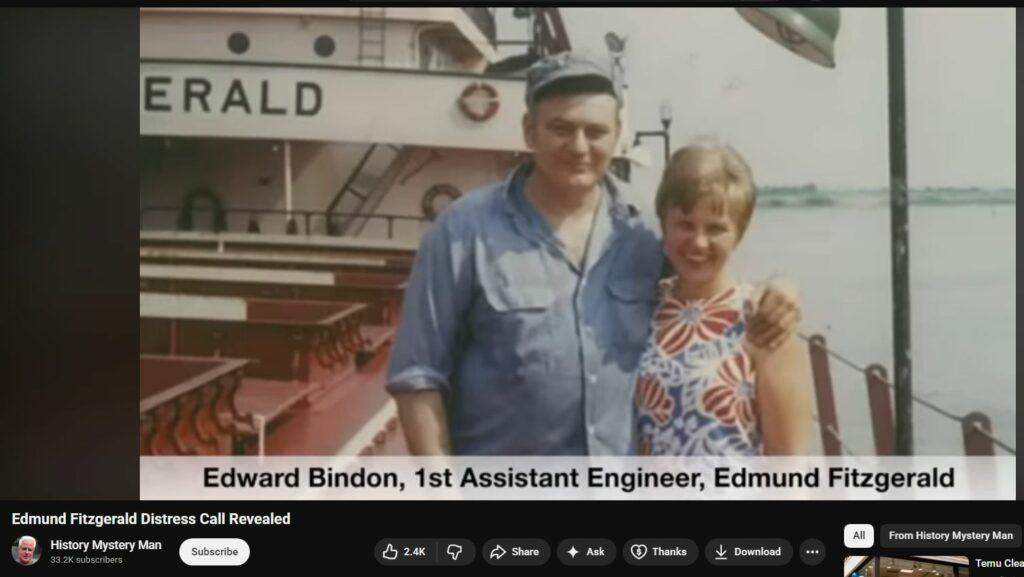


https://www.youtube.com/watch?v=sENSjIifn1Q
Historical reference:
SS Edmund Fitzgerald was an American Great Lakes freighter that sank in Lake Superior during a storm on November 10, 1975, with the loss of the entire crew of 29 men. When launched on June 7, 1958, she was the largest ship on North America’s Great Lakes and remains the largest to have sunk there. She was located in deep water on November 14, 1975, by a U.S. Navy aircraft detecting magnetic anomalies, and found soon afterwards to be in two large pieces.
Edmund Fitzgerald left Superior, Wisconsin, at 2:15 p.m. on the afternoon of November 9, 1975, under the command of Captain Ernest M. McSorley. She was en route to the steel mill on Zug Island, near Detroit, Michigan, with a cargo of 26,116 long tons (29,250 short tons; 26,535 t) of taconite ore pellets and soon reached her full speed of 16.3 miles per hour (14.2 kn; 26.2 km/h). Around 5 p.m., Edmund Fitzgerald joined a second freighter under the command of Captain Jesse B. “Bernie” Cooper, Arthur M. Anderson, destined for Gary, Indiana, out of Two Harbors, Minnesota. The weather forecast was not unusual for November and the National Weather Service (NWS) predicted that a storm would pass just south of Lake Superior by 7 a.m. on November 10.
SS Wilfred Sykes loaded opposite Edmund Fitzgerald at the Burlington Northern Dock #1 and departed at 4:15 p.m., about two hours after Edmund Fitzgerald. In contrast to the NWS forecast, Captain Dudley J. Paquette of Wilfred Sykes predicted that a major storm would directly cross Lake Superior. From the outset, he chose a route that took advantage of the protection offered by the lake’s north shore to avoid the worst effects of the storm. The crew of Wilfred Sykes followed the radio conversations between Edmund Fitzgerald and Arthur M. Anderson during the first part of their trip and overheard their captains deciding to take the regular Lake Carriers’ Association downbound route. The NWS altered its forecast at 7:00 p.m., issuing gale warnings for the whole of Lake Superior. Arthur M. Anderson and Edmund Fitzgerald altered course northward, seeking shelter along the Ontario shore, where they encountered a winter storm at 1:00 a.m. on November 10. Edmund Fitzgerald reported winds of 52 knots (96 km/h; 60 mph) and waves 10 feet (3.0 m) high. Captain Paquette of Wilfred Sykes reported that after 1 a.m., he overheard McSorley say that he had reduced the ship’s speed because of the rough conditions. Paquette said he was stunned to later hear McSorley, who was not known for turning aside or slowing down, state that “we’re going to try for some lee from Isle Royale. You’re walking away from us anyway … I can’t stay with you.”
At 2:00 a.m. on November 10, the NWS upgraded its warnings from gale to storm, forecasting winds of 35–50 knots (65–93 km/h; 40–58 mph). Until then, Edmund Fitzgerald had followed Arthur M. Anderson, which was travelling at a constant 14.6 miles per hour (12.7 kn; 23.5 km/h), but the faster Edmund Fitzgerald pulled ahead at about 3:00 a.m. As the storm center passed over the ships, they experienced shifting winds, with wind speeds temporarily dropping as wind direction changed from northeast to south and then northwest. After 1:50 p.m., when Arthur M. Anderson logged winds of 50 knots (93 km/h; 58 mph), wind speeds again picked up rapidly, and it began to snow at 2:45 p.m., reducing visibility; Arthur M. Anderson lost sight of Edmund Fitzgerald, which was about 16 miles (26 km) ahead at the time.
Shortly after 3:30 p.m., Captain McSorley radioed Arthur M. Anderson to report that Edmund Fitzgerald was taking on water and had lost two vent covers and a fence railing. The vessel had also developed a list. Two of Edmund Fitzgerald’s six bilge pumps ran continuously to discharge shipped water. McSorley said that he would slow his ship down so that Arthur M. Anderson could close the gap between them. In a broadcast shortly afterward, the United States Coast Guard (USCG) warned all shipping that the Soo Locks had been closed and they should seek safe anchorage. Shortly after 4:10 p.m., McSorley called Arthur M. Anderson again to report a radar failure and asked Arthur M. Anderson to keep track of them. Edmund Fitzgerald, effectively blind, slowed to let Arthur M. Anderson come within a 10-mile (16 km) range so she could receive radar guidance from the other ship.
For a time, Arthur M. Anderson directed Edmund Fitzgerald toward the relative safety of Whitefish Bay; then, at 4:39 p.m., McSorley contacted the USCG station in Grand Marais, Michigan, to inquire whether the Whitefish Point light and navigation beacon were operational. The USCG replied that their monitoring equipment indicated that both instruments were inactive. McSorley then hailed any ships in the Whitefish Point area to report the state of the navigational aids, receiving an answer from Captain Cedric Woodard of Avafors between 5:00 and 5:30 p.m. that the Whitefish Point light was on but not the radio beacon. Woodard testified to the Marine Board that he overheard McSorley say, “Don’t allow nobody on deck,” as well as something about a vent that Woodard could not understand. Some time later, McSorley told Woodard, “I have a ‘bad list’, I have lost both radars, and am taking heavy seas over the deck in one of the worst seas I have ever been in.”
By late in the afternoon of November 10, sustained winds of over 50 knots (93 km/h; 58 mph) were recorded by ships and observation points across eastern Lake Superior. Arthur M. Anderson logged sustained winds as high as 58 knots (107 km/h; 67 mph) at 4:52 p.m., while waves increased to as high as 25 feet (7.6 m) by 6:00 p.m. Arthur M. Anderson was also struck by 70-to-75-knot (130 to 139 km/h; 81 to 86 mph) gusts and rogue waves as high as 35 feet (11 m).
At approximately 7:10 p.m., when Arthur M. Anderson notified Edmund Fitzgerald of an upbound ship and asked how she was doing, McSorley reported, “We are holding our own.” She was never heard from again. No distress signal was received, and ten minutes later, Arthur M. Anderson lost the ability either to reach Edmund Fitzgerald by radio or to detect her on radar.
Captain Cooper of Arthur M. Anderson first called the USCG in Sault Ste. Marie at 7:39 p.m. on channel 16, the radio distress frequency. The USCG responders instructed him to call back on channel 12 because they wanted to keep their emergency channel open and they were having difficulty with their communication systems, including antennas blown down by the storm. Cooper then contacted the upbound saltwater vessel Nanfri and was told that she could not pick up Edmund Fitzgerald on her radar either. Despite repeated attempts to raise the USCG, Cooper was not successful until 7:54 p.m. when the officer on duty asked him to keep watch for a 16-foot (4.9 m) boat lost in the area. At about 8:25 p.m., Cooper again called the USCG to express his concern about Edmund Fitzgerald and at 9:03 p.m. reported her missing. Petty Officer Philip Branch later testified, “I considered it serious, but at the time it was not urgent.”
Lacking appropriate search-and-rescue vessels to respond to Edmund Fitzgerald’s disaster, at approximately 9:00 p.m., the USCG asked Arthur M. Anderson to turn around and look for survivors. Around 10:30 p.m., the USCG asked all commercial vessels anchored in or near Whitefish Bay to assist in the search. The initial search for survivors was carried out by Arthur M. Anderson, and a second freighter, SS William Clay Ford. The efforts of a third freighter, the Toronto-registered SS Hilda Marjanne, were foiled by the weather. The USCG sent a buoy tender, Woodrush, from Duluth, Minnesota, but it took two and a half hours to launch and a day to travel to the search area. The Traverse City, Michigan, USCG station launched an HU-16 fixed-wing search aircraft that arrived on the scene at 10:53 p.m. while an HH-52 USCG helicopter with a 3.8-million-candlepower searchlight arrived at 1:00 a.m. on November 11. Canadian Coast Guard aircraft joined the three-day search and the Ontario Provincial Police established and maintained a beach patrol all along the eastern shore of Lake Superior.
Although the search recovered debris, including lifeboats and rafts, none of the crew were found. On her final voyage, Edmund Fitzgerald’s crew of 29 consisted of the captain; the first, second, and third mates; five engineers; three oilers; a cook; a wiper; two maintenance men; three watchmen; three deckhands; three wheelsmen; two porters; a cadet; and a steward. Most of the crew were from Ohio and Wisconsin; their ages ranged from 20 (watchman Karl A. Peckol) to 63 (Captain McSorley).
A U.S. Navy Lockheed P-3 Orion aircraft, piloted by Lt. George Conner and equipped to detect magnetic anomalies usually associated with submarines, found the wreck on November 14, 1975 in Canadian waters close to the international boundary at a depth of 530 feet (160 m). Edmund Fitzgerald lies about 15 miles (13 nmi; 24 km) west of Deadman’s Cove, Ontario; about 8 miles (7.0 nmi; 13 km) northwest of Pancake Bay Provincial Park; and 17 miles (15 nmi; 27 km) from the entrance to Whitefish Bay to the southeast. A further November 14–16 survey by the USCG using a side scan sonar revealed two large objects lying close together on the lake floor. The U.S. Navy also contracted Seaward, Inc., to conduct a second survey between November 22 and 25.
From May 20 to 28, 1976, the U.S. Navy dived on the wreck using its unmanned submersible, CURV-III, and found Edmund Fitzgerald lying in two large pieces in 530 feet (160 m) of water. Navy estimates put the length of the bow section at 276 feet (84 m) and that of the stern section at 253 feet (77 m). The bow section stood upright in the mud, some 170 feet (52 m) from the stern section that lay capsized at a 50-degree angle from the bow. In between the two broken sections lay a large mass of taconite pellets and scattered wreckage lying about, including hatch covers and hull plating.
In 1980, during a Lake Superior research dive expedition, marine explorer Jean-Michel Cousteau, the son of Jacques Cousteau, sent two divers from RV Calypso in the first manned submersible dive to Edmund Fitzgerald. The dive was brief, and although the dive team drew no final conclusions, they speculated that Edmund Fitzgerald had broken up on the surface.
The Michigan Sea Grant Program organized a three-day dive to survey Edmund Fitzgerald in 1989. The primary objective was to record 3-D videotape for use in museum educational programs and the production of documentaries. The expedition used a towed survey system (TSS Mk1) and a self-propelled, tethered, free-swimming remotely operated underwater vehicle (ROV). The Mini Rover ROV was equipped with miniature stereoscopic cameras and wide-angle lenses in order to produce 3-D images. The towed survey system and the Mini Rover ROV were designed, built and operated by Chris Nicholson of Deep Sea Systems International, Inc. Participants included the National Oceanic and Atmospheric Administration (NOAA), the National Geographic Society, the United States Army Corps of Engineers, the Great Lakes Shipwreck Historical Society (GLSHS), and the United States Fish and Wildlife Service, the latter providing RV Grayling as the support vessel for the ROV. The GLSHS used part of the five hours of video footage produced during the dives in a documentary and the National Geographic Society used a segment in a broadcast. Frederick Stonehouse, who wrote one of the first books on the Edmund Fitzgerald wreck, moderated a 1990 panel review of the video that drew no conclusions about the cause of Edmund Fitzgerald’s sinking.
Canadian explorer Joseph B. MacInnis organized and led six publicly funded dives to Edmund Fitzgerald over a three-day period in 1994. Harbor Branch Oceanographic Institution provided Edwin A. Link as the support vessel, and their manned submersible, Celia. The GLSHS paid $10,000 for three of its members to each join a dive and take still pictures. MacInnis concluded that the notes and video obtained during the dives did not provide an explanation why Edmund Fitzgerald sank. The same year, longtime sport diver Fred Shannon formed Deepquest Ltd., and organized a privately funded dive to the wreck of Edmund Fitzgerald, using Delta Oceanographic’s submersible, Delta. Deepquest Ltd. conducted seven dives and took more than 42 hours of underwater video while Shannon set the record for the longest submersible dive to Edmund Fitzgerald at 211 minutes. Prior to conducting the dives, Shannon studied NOAA navigational charts and found that the international boundary had changed three times before its publication by NOAA in 1976. Shannon determined that based on GPS coordinates from the 1994 Deepquest expedition, “at least one-third of the two acres of immediate wreckage containing the two major portions of the vessel is in U.S. waters because of an error in the position of the U.S.–Canada boundary line shown on official lake charts.” Shannon’s group discovered the remains of a crew member partly dressed in coveralls and wearing a life jacket alongside the bow of the ship, indicating that at least one of the crew was aware of the possibility of sinking. The life jacket had deteriorated canvas and “what is thought to be six rectangular cork blocks … clearly visible.” Shannon concluded that “massive and advancing structural failure” caused Edmund Fitzgerald to break apart on the surface and sink.
MacInnis led another series of dives in 1995 to salvage the bell from Edmund Fitzgerald. The Sault Tribe of Chippewa Indians backed the expedition by co-signing a loan in the amount of $250,000. Canadian engineer Phil Nuytten’s atmospheric diving suit, known as the Newtsuit, was used to retrieve the bell from the ship, replace it with a replica, and put a beer can in Edmund Fitzgerald’s pilothouse. That same year, Terrence Tysall and Mike Zee set multiple records when they used trimix gas to scuba dive to Edmund Fitzgerald. The pair are the only people known to have touched the Edmund Fitzgerald wreck. They also set records for the deepest scuba dive on the Great Lakes and the deepest shipwreck dive, and were the first divers to reach Edmund Fitzgerald without the aid of a submersible. It took six minutes to reach the wreck, six minutes to survey it, and three hours to resurface to avoid decompression sickness, also known as “the bends”.
Extreme weather and sea conditions play a role in all of the published hypotheses regarding Edmund Fitzgerald’s sinking, but they differ on the other causal factors.
- Waves and weather hypothesis.
- Rogue wave hypothesis.
- Cargo-hold flooding hypothesis.
- Shoaling hypothesis.
- Structural failure hypothesis.
- Topside damage hypothesis.
https://www.reddit.com/r/Shipwrecks/comments/1jzp4vl/the_wreck_of_the_ss_edmund_fitzgerald_1975/
Gematria
Values (4 Primary Ciphers)
| # | Phrase | Ordinal | Reverse Ordinal | Reduction | Reverse Reduction |
|---|---|---|---|---|---|
| 1 | 1958 | 23 | 13 | 23 | 23 |
| 2 | 1975 | 22 | 14 | 22 | 22 |
| 3 | 26116 tons | 68 | 40 | 14 | 22 |
| 4 | 29 man crew | 77 | 112 | 32 | 40 |
| 5 | 29 souls | 86 | 49 | 14 | 31 |
| 6 | 729 | 18 | 9 | 18 | 18 |
| 7 | 75 | 12 | 6 | 12 | 12 |
| 8 | Allen G. Kalmon | 117 | 207 | 45 | 63 |
| 9 | big fitz | 79 | 110 | 43 | 38 |
| 10 | Blaine H. Wilhelm | 133 | 245 | 70 | 74 |
| 11 | Bruce L. Hudson | 142 | 182 | 52 | 65 |
| 12 | David E. Weiss | 120 | 177 | 48 | 69 |
| 13 | detroit | 91 | 98 | 37 | 44 |
| 14 | detroit michigan | 155 | 250 | 83 | 88 |
| 15 | dew | 32 | 49 | 14 | 13 |
| 16 | directed energy weapons | 235 | 332 | 109 | 107 |
| 17 | edmund fitzgerald | 169 | 263 | 79 | 83 |
| 18 | Edward F. Bindon | 119 | 232 | 65 | 70 |
| 19 | Ernest M. McSorley | 204 | 201 | 69 | 84 |
| 20 | ernest mcsorey | 179 | 172 | 62 | 73 |
| 21 | Eugene W. O’Brien | 143 | 208 | 71 | 64 |
| 22 | Frederick J. Beetcher | 155 | 331 | 92 | 106 |
| 23 | George J. Holl | 114 | 183 | 60 | 48 |
| 24 | gitche gumee | 103 | 194 | 58 | 50 |
| 25 | Gordon F. MacLellan | 152 | 280 | 71 | 82 |
| 26 | gordon lightfoot | 185 | 220 | 86 | 67 |
| 27 | great lakes | 99 | 171 | 36 | 63 |
| 28 | iron ore | 94 | 95 | 49 | 41 |
| 29 | James A. Pratt | 124 | 173 | 34 | 74 |
| 30 | John D. Simmons | 153 | 171 | 54 | 63 |
| 31 | John H. McCarthy | 146 | 205 | 65 | 61 |
| 32 | John J. Poviach | 131 | 193 | 59 | 58 |
| 33 | Joseph W. Mazes | 160 | 164 | 52 | 56 |
| 34 | Karl A. Peckol | 105 | 192 | 42 | 66 |
| 35 | lake superior | 150 | 174 | 60 | 75 |
| 36 | manatee island | 118 | 233 | 46 | 80 |
| 37 | Mark A. Thomas | 120 | 177 | 39 | 69 |
| 38 | Michael E. Armagost | 150 | 282 | 69 | 93 |
| 39 | michigan | 64 | 152 | 46 | 44 |
| 40 | Nolan S. Church | 136 | 188 | 55 | 62 |
| 41 | november 10 | 94 | 122 | 40 | 41 |
| 42 | Oliver J. Champeau | 159 | 246 | 69 | 84 |
| 43 | Paul M. Riippa | 132 | 165 | 60 | 66 |
| 44 | Ralph G. Walton | 147 | 177 | 57 | 60 |
| 45 | Ransom E. Cundy | 152 | 172 | 53 | 64 |
| 46 | Robert C. Rafferty | 180 | 225 | 81 | 90 |
| 47 | Russell G. Haskell | 181 | 224 | 55 | 89 |
| 48 | ss edmund fitzgerald | 207 | 279 | 81 | 99 |
| 49 | taconite pellets | 176 | 229 | 59 | 85 |
| 50 | Thomas D. Bentsen | 159 | 219 | 51 | 75 |
| 51 | Thomas D. Borgeson | 175 | 230 | 67 | 77 |
| 52 | Thomas E. Edwards | 155 | 223 | 56 | 79 |
| 53 | us navy | 102 | 60 | 21 | 33 |
| 54 | weapons test | 157 | 140 | 40 | 59 |
| 55 | whitefish bay | 135 | 189 | 63 | 63 |
| 56 | whitefish point | 181 | 197 | 82 | 71 |
| 57 | William J. Spengler | 185 | 247 | 77 | 94 |
| 58 | wreck of the edmund fitzgerald | 283 | 419 | 130 | 131 |
Cross-Cipher Matches (A first)
| # | A | aCipher | Value | B | bCipher |
|---|---|---|---|---|---|
| 1 | 1958 | Reverse Ordinal | 13 | dew | Reverse Reduction |
| 2 | 1975 | Ordinal | 22 | 26116 tons | Reverse Reduction |
| 3 | 1975 | Reverse Ordinal | 14 | 26116 tons | Reduction |
| 4 | 1975 | Reduction | 22 | 26116 tons | Reverse Reduction |
| 5 | 1975 | Reverse Reduction | 22 | 26116 tons | Reverse Reduction |
| 6 | 1975 | Reverse Ordinal | 14 | 29 souls | Reduction |
| 7 | 1975 | Reverse Ordinal | 14 | dew | Reduction |
| 8 | 26116 tons | Reduction | 14 | 29 souls | Reduction |
| 9 | 26116 tons | Reverse Ordinal | 40 | 29 man crew | Reverse Reduction |
| 10 | 26116 tons | Reduction | 14 | dew | Reduction |
| 11 | 26116 tons | Reverse Ordinal | 40 | weapons test | Reduction |
| 12 | 29 man crew | Ordinal | 77 | Thomas D. Borgeson | Reverse Reduction |
| 13 | 29 man crew | Ordinal | 77 | William J. Spengler | Reduction |
| 14 | 29 man crew | Reduction | 32 | dew | Ordinal |
| 15 | 29 man crew | Reverse Reduction | 40 | weapons test | Reduction |
| 16 | 29 souls | Reverse Ordinal | 49 | dew | Reverse Ordinal |
| 17 | 29 souls | Reduction | 14 | dew | Reduction |
| 18 | 29 souls | Ordinal | 86 | gordon lightfoot | Reduction |
| 19 | Allen G. Kalmon | Reverse Reduction | 63 | John D. Simmons | Reverse Reduction |
| 20 | Allen G. Kalmon | Reverse Ordinal | 207 | ss edmund fitzgerald | Ordinal |
| 21 | Allen G. Kalmon | Reverse Reduction | 63 | whitefish bay | Reduction |
| 22 | Allen G. Kalmon | Reverse Reduction | 63 | whitefish bay | Reverse Reduction |
| 23 | big fitz | Ordinal | 79 | Thomas E. Edwards | Reverse Reduction |
| 24 | Bruce L. Hudson | Reduction | 52 | Joseph W. Mazes | Reduction |
| 25 | Bruce L. Hudson | Reverse Reduction | 65 | John H. McCarthy | Reduction |
| 26 | edmund fitzgerald | Reduction | 79 | big fitz | Ordinal |
| 27 | edmund fitzgerald | Reduction | 79 | Thomas E. Edwards | Reverse Reduction |
| 28 | edmund fitzgerald | Reverse Reduction | 83 | detroit michigan | Reduction |
| 29 | Edward F. Bindon | Reduction | 65 | Bruce L. Hudson | Reverse Reduction |
| 30 | Edward F. Bindon | Reduction | 65 | John H. McCarthy | Reduction |
| 31 | Edward F. Bindon | Reverse Reduction | 70 | Blaine H. Wilhelm | Reduction |
| 32 | Ernest M. McSorley | Reduction | 69 | Mark A. Thomas | Reverse Reduction |
| 33 | Ernest M. McSorley | Reduction | 69 | David E. Weiss | Reverse Reduction |
| 34 | ernest mcsorey | Reduction | 62 | Nolan S. Church | Reverse Reduction |
| 35 | ernest mcsorey | Reverse Ordinal | 172 | Ransom E. Cundy | Reverse Ordinal |
| 36 | Eugene W. O’Brien | Reverse Reduction | 64 | michigan | Ordinal |
| 37 | Frederick J. Beetcher | Ordinal | 155 | Thomas E. Edwards | Ordinal |
| 38 | Frederick J. Beetcher | Ordinal | 155 | detroit michigan | Ordinal |
| 39 | George J. Holl | Reduction | 60 | Paul M. Riippa | Reduction |
| 40 | George J. Holl | Reduction | 60 | Ralph G. Walton | Reverse Reduction |
| 41 | George J. Holl | Reverse Reduction | 48 | David E. Weiss | Reduction |
| 42 | George J. Holl | Reduction | 60 | us navy | Reverse Ordinal |
| 43 | gitche gumee | Reduction | 58 | John J. Poviach | Reverse Reduction |
| 44 | Gordon F. MacLellan | Reduction | 71 | Eugene W. O’Brien | Reduction |
| 45 | Gordon F. MacLellan | Ordinal | 152 | michigan | Reverse Ordinal |
| 46 | great lakes | Reverse Reduction | 63 | Allen G. Kalmon | Reverse Reduction |
| 47 | great lakes | Reverse Ordinal | 171 | John D. Simmons | Reverse Ordinal |
| 48 | great lakes | Reverse Reduction | 63 | John D. Simmons | Reverse Reduction |
| 49 | great lakes | Ordinal | 99 | ss edmund fitzgerald | Reverse Reduction |
| 50 | great lakes | Reverse Reduction | 63 | whitefish bay | Reduction |
| 51 | great lakes | Reverse Reduction | 63 | whitefish bay | Reverse Reduction |
| 52 | iron ore | Ordinal | 94 | november 10 | Ordinal |
| 53 | iron ore | Reverse Reduction | 41 | november 10 | Reverse Reduction |
| 54 | iron ore | Reduction | 49 | 29 souls | Reverse Ordinal |
| 55 | iron ore | Ordinal | 94 | William J. Spengler | Reverse Reduction |
| 56 | iron ore | Reduction | 49 | dew | Reverse Ordinal |
| 57 | James A. Pratt | Reverse Reduction | 74 | Blaine H. Wilhelm | Reverse Reduction |
| 58 | John D. Simmons | Reverse Reduction | 63 | whitefish bay | Reduction |
| 59 | John D. Simmons | Reverse Reduction | 63 | whitefish bay | Reverse Reduction |
| 60 | John J. Poviach | Reduction | 59 | weapons test | Reverse Reduction |
| 61 | John J. Poviach | Reduction | 59 | taconite pellets | Reduction |
| 62 | Karl A. Peckol | Reverse Reduction | 66 | Paul M. Riippa | Reverse Reduction |
| 63 | lake superior | Ordinal | 150 | Michael E. Armagost | Ordinal |
| 64 | lake superior | Reverse Reduction | 75 | Thomas D. Bentsen | Reverse Reduction |
| 65 | lake superior | Reduction | 60 | George J. Holl | Reduction |
| 66 | lake superior | Reduction | 60 | Paul M. Riippa | Reduction |
| 67 | lake superior | Reduction | 60 | Ralph G. Walton | Reverse Reduction |
| 68 | lake superior | Reduction | 60 | us navy | Reverse Ordinal |
| 69 | manatee island | Reduction | 46 | michigan | Reduction |
| 70 | Mark A. Thomas | Reverse Ordinal | 177 | Ralph G. Walton | Reverse Ordinal |
| 71 | Mark A. Thomas | Ordinal | 120 | David E. Weiss | Ordinal |
| 72 | Mark A. Thomas | Reverse Ordinal | 177 | David E. Weiss | Reverse Ordinal |
| 73 | Mark A. Thomas | Reverse Reduction | 69 | David E. Weiss | Reverse Reduction |
| 74 | Michael E. Armagost | Reduction | 69 | Oliver J. Champeau | Reduction |
| 75 | Michael E. Armagost | Reduction | 69 | Ernest M. McSorley | Reduction |
| 76 | Michael E. Armagost | Reduction | 69 | Mark A. Thomas | Reverse Reduction |
| 77 | Michael E. Armagost | Reduction | 69 | David E. Weiss | Reverse Reduction |
| 78 | michigan | Reverse Reduction | 44 | detroit | Reverse Reduction |
| 79 | Nolan S. Church | Reduction | 55 | Russell G. Haskell | Reduction |
| 80 | november 10 | Reduction | 40 | 26116 tons | Reverse Ordinal |
| 81 | november 10 | Reduction | 40 | 29 man crew | Reverse Reduction |
| 82 | november 10 | Ordinal | 94 | William J. Spengler | Reverse Reduction |
| 83 | november 10 | Reduction | 40 | weapons test | Reduction |
| 84 | Oliver J. Champeau | Reduction | 69 | Ernest M. McSorley | Reduction |
| 85 | Oliver J. Champeau | Reverse Reduction | 84 | Ernest M. McSorley | Reverse Reduction |
| 86 | Oliver J. Champeau | Reduction | 69 | Mark A. Thomas | Reverse Reduction |
| 87 | Oliver J. Champeau | Reduction | 69 | David E. Weiss | Reverse Reduction |
| 88 | Paul M. Riippa | Reduction | 60 | Ralph G. Walton | Reverse Reduction |
| 89 | Paul M. Riippa | Reduction | 60 | us navy | Reverse Ordinal |
| 90 | Ralph G. Walton | Reverse Ordinal | 177 | David E. Weiss | Reverse Ordinal |
| 91 | Ralph G. Walton | Reverse Reduction | 60 | us navy | Reverse Ordinal |
| 92 | Ransom E. Cundy | Ordinal | 152 | Gordon F. MacLellan | Ordinal |
| 93 | Ransom E. Cundy | Reverse Reduction | 64 | Eugene W. O’Brien | Reverse Reduction |
| 94 | Ransom E. Cundy | Ordinal | 152 | michigan | Reverse Ordinal |
| 95 | Ransom E. Cundy | Reverse Reduction | 64 | michigan | Ordinal |
| 96 | Robert C. Rafferty | Reduction | 81 | ss edmund fitzgerald | Reduction |
| 97 | Thomas D. Bentsen | Ordinal | 159 | Oliver J. Champeau | Ordinal |
| 98 | Thomas D. Borgeson | Reverse Reduction | 77 | William J. Spengler | Reduction |
| 99 | Thomas D. Borgeson | Reduction | 67 | gordon lightfoot | Reverse Reduction |
| 100 | Thomas E. Edwards | Reduction | 56 | Joseph W. Mazes | Reverse Reduction |
| 101 | Thomas E. Edwards | Ordinal | 155 | detroit michigan | Ordinal |
| 102 | weapons test | Reverse Reduction | 59 | taconite pellets | Reduction |
| 103 | whitefish point | Ordinal | 181 | Russell G. Haskell | Ordinal |
| 104 | whitefish point | Reduction | 82 | Gordon F. MacLellan | Reverse Reduction |
| 105 | whitefish point | Reverse Reduction | 71 | Gordon F. MacLellan | Reduction |
| 106 | whitefish point | Reverse Reduction | 71 | Eugene W. O’Brien | Reduction |
| 107 | William J. Spengler | Ordinal | 185 | gordon lightfoot | Ordinal |
| 108 | wreck of the edmund fitzgerald | Reverse Reduction | 131 | John J. Poviach | Ordinal |
Cross-Cipher Matches (B first)
| # | B | bCipher | Value | A | aCipher |
|---|---|---|---|---|---|
| 1 | 26116 tons | Reverse Ordinal | 40 | november 10 | Reduction |
| 2 | 26116 tons | Reverse Reduction | 22 | 1975 | Ordinal |
| 3 | 26116 tons | Reduction | 14 | 1975 | Reverse Ordinal |
| 4 | 26116 tons | Reverse Reduction | 22 | 1975 | Reduction |
| 5 | 26116 tons | Reverse Reduction | 22 | 1975 | Reverse Reduction |
| 6 | 29 man crew | Reverse Reduction | 40 | november 10 | Reduction |
| 7 | 29 man crew | Reverse Reduction | 40 | 26116 tons | Reverse Ordinal |
| 8 | 29 souls | Reverse Ordinal | 49 | iron ore | Reduction |
| 9 | 29 souls | Reduction | 14 | 1975 | Reverse Ordinal |
| 10 | 29 souls | Reduction | 14 | 26116 tons | Reduction |
| 11 | Allen G. Kalmon | Reverse Reduction | 63 | great lakes | Reverse Reduction |
| 12 | big fitz | Ordinal | 79 | edmund fitzgerald | Reduction |
| 13 | Blaine H. Wilhelm | Reduction | 70 | Edward F. Bindon | Reverse Reduction |
| 14 | Blaine H. Wilhelm | Reverse Reduction | 74 | James A. Pratt | Reverse Reduction |
| 15 | Bruce L. Hudson | Reverse Reduction | 65 | Edward F. Bindon | Reduction |
| 16 | David E. Weiss | Reverse Reduction | 69 | Michael E. Armagost | Reduction |
| 17 | David E. Weiss | Reverse Reduction | 69 | Oliver J. Champeau | Reduction |
| 18 | David E. Weiss | Reduction | 48 | George J. Holl | Reverse Reduction |
| 19 | David E. Weiss | Reverse Reduction | 69 | Ernest M. McSorley | Reduction |
| 20 | David E. Weiss | Ordinal | 120 | Mark A. Thomas | Ordinal |
| 21 | David E. Weiss | Reverse Ordinal | 177 | Mark A. Thomas | Reverse Ordinal |
| 22 | David E. Weiss | Reverse Reduction | 69 | Mark A. Thomas | Reverse Reduction |
| 23 | David E. Weiss | Reverse Ordinal | 177 | Ralph G. Walton | Reverse Ordinal |
| 24 | detroit | Reverse Reduction | 44 | michigan | Reverse Reduction |
| 25 | detroit michigan | Reduction | 83 | edmund fitzgerald | Reverse Reduction |
| 26 | detroit michigan | Ordinal | 155 | Frederick J. Beetcher | Ordinal |
| 27 | detroit michigan | Ordinal | 155 | Thomas E. Edwards | Ordinal |
| 28 | dew | Reverse Reduction | 13 | 1958 | Reverse Ordinal |
| 29 | dew | Reverse Ordinal | 49 | iron ore | Reduction |
| 30 | dew | Reduction | 14 | 1975 | Reverse Ordinal |
| 31 | dew | Reduction | 14 | 26116 tons | Reduction |
| 32 | dew | Reverse Ordinal | 49 | 29 souls | Reverse Ordinal |
| 33 | dew | Reduction | 14 | 29 souls | Reduction |
| 34 | dew | Ordinal | 32 | 29 man crew | Reduction |
| 35 | Ernest M. McSorley | Reduction | 69 | Michael E. Armagost | Reduction |
| 36 | Ernest M. McSorley | Reduction | 69 | Oliver J. Champeau | Reduction |
| 37 | Ernest M. McSorley | Reverse Reduction | 84 | Oliver J. Champeau | Reverse Reduction |
| 38 | Eugene W. O’Brien | Reduction | 71 | whitefish point | Reverse Reduction |
| 39 | Eugene W. O’Brien | Reverse Reduction | 64 | Ransom E. Cundy | Reverse Reduction |
| 40 | Eugene W. O’Brien | Reduction | 71 | Gordon F. MacLellan | Reduction |
| 41 | George J. Holl | Reduction | 60 | lake superior | Reduction |
| 42 | Gordon F. MacLellan | Reverse Reduction | 82 | whitefish point | Reduction |
| 43 | Gordon F. MacLellan | Reduction | 71 | whitefish point | Reverse Reduction |
| 44 | Gordon F. MacLellan | Ordinal | 152 | Ransom E. Cundy | Ordinal |
| 45 | gordon lightfoot | Reduction | 86 | 29 souls | Ordinal |
| 46 | gordon lightfoot | Reverse Reduction | 67 | Thomas D. Borgeson | Reduction |
| 47 | gordon lightfoot | Ordinal | 185 | William J. Spengler | Ordinal |
| 48 | John D. Simmons | Reverse Ordinal | 171 | great lakes | Reverse Ordinal |
| 49 | John D. Simmons | Reverse Reduction | 63 | great lakes | Reverse Reduction |
| 50 | John D. Simmons | Reverse Reduction | 63 | Allen G. Kalmon | Reverse Reduction |
| 51 | John H. McCarthy | Reduction | 65 | Edward F. Bindon | Reduction |
| 52 | John H. McCarthy | Reduction | 65 | Bruce L. Hudson | Reverse Reduction |
| 53 | John J. Poviach | Reverse Reduction | 58 | gitche gumee | Reduction |
| 54 | John J. Poviach | Ordinal | 131 | wreck of the edmund fitzgerald | Reverse Reduction |
| 55 | Joseph W. Mazes | Reverse Reduction | 56 | Thomas E. Edwards | Reduction |
| 56 | Joseph W. Mazes | Reduction | 52 | Bruce L. Hudson | Reduction |
| 57 | Mark A. Thomas | Reverse Reduction | 69 | Michael E. Armagost | Reduction |
| 58 | Mark A. Thomas | Reverse Reduction | 69 | Oliver J. Champeau | Reduction |
| 59 | Mark A. Thomas | Reverse Reduction | 69 | Ernest M. McSorley | Reduction |
| 60 | Michael E. Armagost | Ordinal | 150 | lake superior | Ordinal |
| 61 | michigan | Reduction | 46 | manatee island | Reduction |
| 62 | michigan | Reverse Ordinal | 152 | Ransom E. Cundy | Ordinal |
| 63 | michigan | Ordinal | 64 | Ransom E. Cundy | Reverse Reduction |
| 64 | michigan | Reverse Ordinal | 152 | Gordon F. MacLellan | Ordinal |
| 65 | michigan | Ordinal | 64 | Eugene W. O’Brien | Reverse Reduction |
| 66 | Nolan S. Church | Reverse Reduction | 62 | ernest mcsorey | Reduction |
| 67 | november 10 | Ordinal | 94 | iron ore | Ordinal |
| 68 | november 10 | Reverse Reduction | 41 | iron ore | Reverse Reduction |
| 69 | Oliver J. Champeau | Reduction | 69 | Michael E. Armagost | Reduction |
| 70 | Oliver J. Champeau | Ordinal | 159 | Thomas D. Bentsen | Ordinal |
| 71 | Paul M. Riippa | Reduction | 60 | lake superior | Reduction |
| 72 | Paul M. Riippa | Reduction | 60 | George J. Holl | Reduction |
| 73 | Paul M. Riippa | Reverse Reduction | 66 | Karl A. Peckol | Reverse Reduction |
| 74 | Ralph G. Walton | Reverse Reduction | 60 | lake superior | Reduction |
| 75 | Ralph G. Walton | Reverse Reduction | 60 | George J. Holl | Reduction |
| 76 | Ralph G. Walton | Reverse Reduction | 60 | Paul M. Riippa | Reduction |
| 77 | Ralph G. Walton | Reverse Ordinal | 177 | Mark A. Thomas | Reverse Ordinal |
| 78 | Ransom E. Cundy | Reverse Ordinal | 172 | ernest mcsorey | Reverse Ordinal |
| 79 | Russell G. Haskell | Ordinal | 181 | whitefish point | Ordinal |
| 80 | Russell G. Haskell | Reduction | 55 | Nolan S. Church | Reduction |
| 81 | ss edmund fitzgerald | Reverse Reduction | 99 | great lakes | Ordinal |
| 82 | ss edmund fitzgerald | Ordinal | 207 | Allen G. Kalmon | Reverse Ordinal |
| 83 | ss edmund fitzgerald | Reduction | 81 | Robert C. Rafferty | Reduction |
| 84 | taconite pellets | Reduction | 59 | John J. Poviach | Reduction |
| 85 | taconite pellets | Reduction | 59 | weapons test | Reverse Reduction |
| 86 | Thomas D. Bentsen | Reverse Reduction | 75 | lake superior | Reverse Reduction |
| 87 | Thomas D. Borgeson | Reverse Reduction | 77 | 29 man crew | Ordinal |
| 88 | Thomas E. Edwards | Reverse Reduction | 79 | edmund fitzgerald | Reduction |
| 89 | Thomas E. Edwards | Reverse Reduction | 79 | big fitz | Ordinal |
| 90 | Thomas E. Edwards | Ordinal | 155 | Frederick J. Beetcher | Ordinal |
| 91 | us navy | Reverse Ordinal | 60 | lake superior | Reduction |
| 92 | us navy | Reverse Ordinal | 60 | George J. Holl | Reduction |
| 93 | us navy | Reverse Ordinal | 60 | Paul M. Riippa | Reduction |
| 94 | us navy | Reverse Ordinal | 60 | Ralph G. Walton | Reverse Reduction |
| 95 | weapons test | Reduction | 40 | november 10 | Reduction |
| 96 | weapons test | Reduction | 40 | 26116 tons | Reverse Ordinal |
| 97 | weapons test | Reduction | 40 | 29 man crew | Reverse Reduction |
| 98 | weapons test | Reverse Reduction | 59 | John J. Poviach | Reduction |
| 99 | whitefish bay | Reduction | 63 | great lakes | Reverse Reduction |
| 100 | whitefish bay | Reverse Reduction | 63 | great lakes | Reverse Reduction |
| 101 | whitefish bay | Reduction | 63 | Allen G. Kalmon | Reverse Reduction |
| 102 | whitefish bay | Reverse Reduction | 63 | Allen G. Kalmon | Reverse Reduction |
| 103 | whitefish bay | Reduction | 63 | John D. Simmons | Reverse Reduction |
| 104 | whitefish bay | Reverse Reduction | 63 | John D. Simmons | Reverse Reduction |
| 105 | William J. Spengler | Reverse Reduction | 94 | iron ore | Ordinal |
| 106 | William J. Spengler | Reverse Reduction | 94 | november 10 | Ordinal |
| 107 | William J. Spengler | Reduction | 77 | 29 man crew | Ordinal |
| 108 | William J. Spengler | Reduction | 77 | Thomas D. Borgeson | Reverse Reduction |
